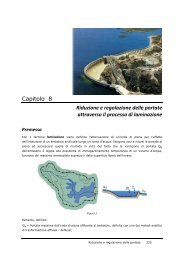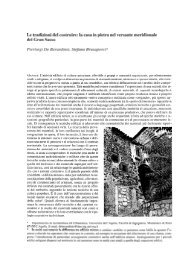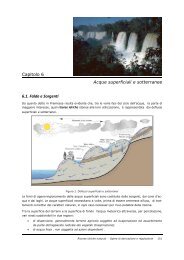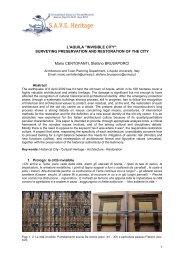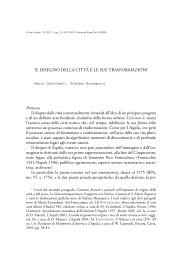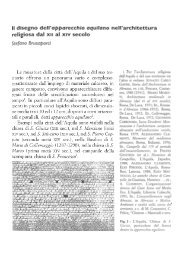Frammentazione ambientale, connettività, reti ecologiche
Frammentazione ambientale, connettività, reti ecologiche
Frammentazione ambientale, connettività, reti ecologiche
You also want an ePaper? Increase the reach of your titles
YUMPU automatically turns print PDFs into web optimized ePapers that Google loves.
Reti <strong>ecologiche</strong> 207<br />
However, some differences exist between the results of the models and the real<br />
world: individuals do not randomly disperse in space, and directional choices may<br />
be affected by previous learning of the landscape, by conspecific attraction and<br />
other eco-ethological variables, difficult to model. Therefore, it would be appropriate<br />
to follow in parallel the study of populations in real landscapes.<br />
Searching for target species – In conservation biology, some species may function<br />
as surrogates to evaluate integrity, diversity, and vulnerability of the ecosystems.<br />
In planning it is appropriate to identify those fragmentation-sensitive species<br />
that may gain advantage from specific elements of the landscape, such as habitat<br />
and connective areas, and that may play a role as indicators of the process. Due to<br />
the large range of species-specific response to fragmentation, it is advisable to make<br />
a simplification identifying “umbrella” species for specific ecosystems. This<br />
target species selection can be carried out from a local check-list, according to conservation,<br />
biogeographical, and ecological criteria.<br />
The use of rareness criteria for species selection has been proposed in nature<br />
conservation. It will be also selected species that show an intrinsic fragmentationsensitivity,<br />
although a still relatively diffused and abundant one. These species are<br />
usually stenoecious, interior, and area-sensitive; they may have been locally extinct<br />
in isolated fragments, or be still present despite a reduced abundance, but are not<br />
common in anthropized environments. Large carnivores are a guild intrinsically<br />
sensitive to fragmentation, which may function as target, umbrella or flagship. A<br />
large number of data on sensitive birds are available.<br />
It is also possible to select target fragmentation-tolerant species (e.g., introduced,<br />
invasive, generalist species) for whom it is better to control their dispersal.<br />
The analysis of patterns of distribution, abundance, and dispersal of target species<br />
(or guilds), will allow us to design a functional ecological network (core areas,<br />
buffer zones, corridors, stepping stones, restoration areas).<br />
The use of ecological and potential distribution data of vertebratofauna, recently<br />
available at a national scale, may help in this aim, in particular when compared to<br />
the effective distribution obtained by field data, which must be collected over an<br />
appropriate spatial and temporal range. An estimate of restricted study areas and of<br />
limited time ranges may lead to wrong conclusions on the status, patterns, and<br />
dynamics of the targets.<br />
Planning and management level - The patterns of distribution and abundance,<br />
drawn from a functional analysis with target-species approach, may be compared to<br />
the presence and spatial articulation of the protected area system.



